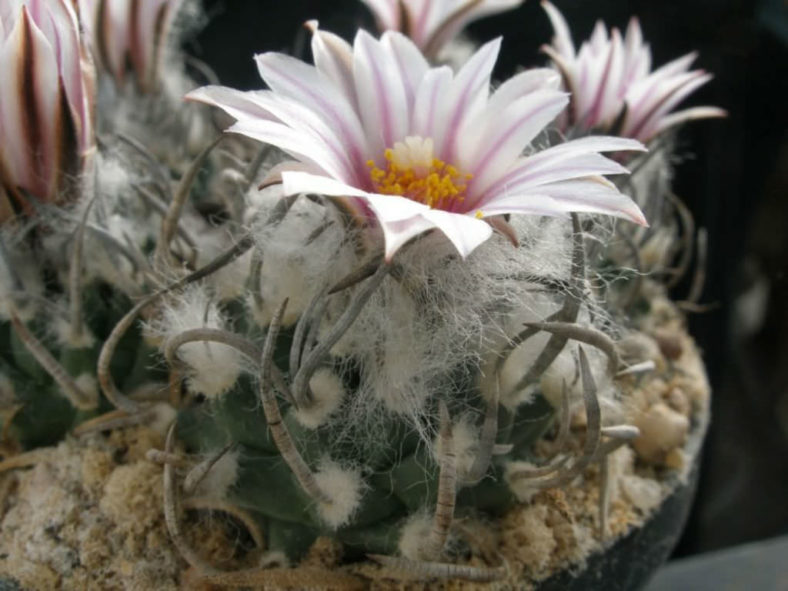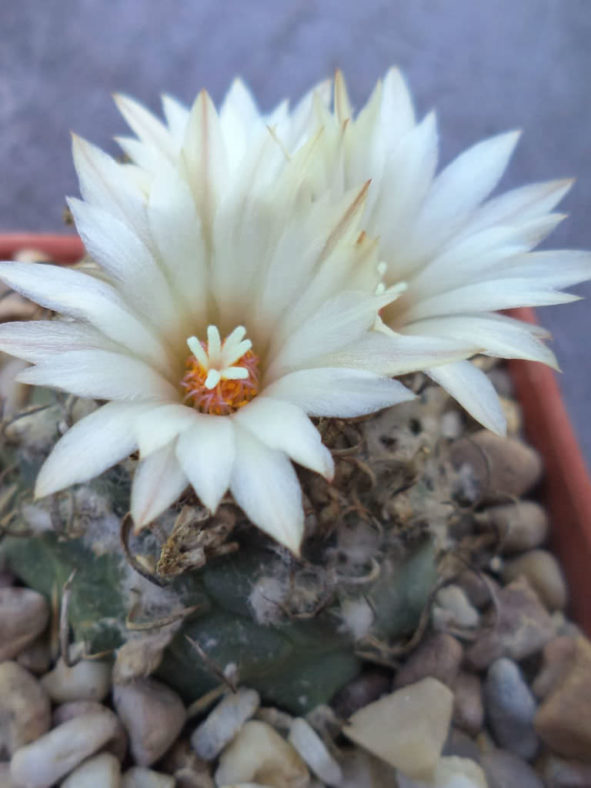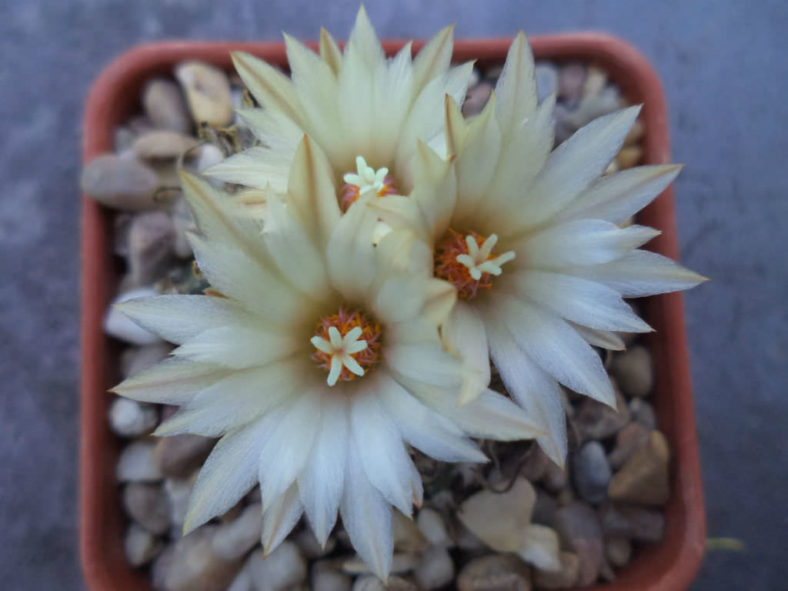Scientific Name
Turbinicarpus schmiedickeanus (Boed.) Buxb. & Backeb.
Synonym(s)
Echinocactus schmiedickeanus, Neolloydia schmiedickeana, Pediocactus schmiedickeanus, Strombocactus schmiedickeanus, Toumeya schmiedickeana, Turbinicarpus schmiedickeanus subsp. schmiedickeanus
Scientific Classification
Family: Cactaceae
Subfamily: Cactoideae
Tribe: Cacteae
Genus: Turbinicarpus
Etymology
The specific epithet "schmiedickeanus" (pronounced "shmee-duh-kee-AY-nuhs") honors Karl Schmiedicke (1870-1926), a German cactus enthusiast.
Origin
Turbinicarpus schmiedickeanus is native to Mexico. It occurs in the hot deserts of Nuevo León, San Luis Potosí, and Tamaulipas.
Description
Turbinicarpus schmiedickeanus is a small cactus with green, spherical, more or less depressed stems with a woolly apex and pyramidal to conical tubercles tipped with a woolly areole and 1 to 3, or rarely 4, spines. It remains solitary or produces offsets to form a small clump. In its native habitat, the stems are nearly completely buried in the soil. They can grow up to 2 inches (5 cm) tall and 1.6 inches (4 cm) in diameter. The spines are persistent only on the upper part of the body and can measure up to 1 inch (2.5 cm) in length.
The flowers are white to pink, outside with darker midribs. They are funnel-shaped, appear in summer, and can reach a diameter of 1 inch (2.5 cm).

Hardiness
USDA hardiness zones 9b to 11b: from 25°F (-3.9°C) to 50°F (10°C).
How to Grow and Care
Turbinicarpus prefer to be in a well-ventilated position in full sun to maintain a good body color and spinal development. When it comes to watering, the golden rule is "never water when the soil is still damp." This is the one error that will certainly kill any plant. Watering should commence in the spring, depending on the weather conditions. The plants should initially be given a light spray to encourage growth.
These cacti can withstand high summer temperatures and benefit from good ventilation. Do not be tempted to overcrowd the plants. They will be far happier with a small space to allow the air to circulate. Winter temperatures can be low at 44 to 46 °F (7 to 8 °C). Indeed, the plants need these low temperatures to ensure a sustained dormant period, resulting in good growth and flowering the following growing season.
Learn more at How to Grow and Care for Turbinicarpus.
Links
- Back to genus Turbinicarpus
- Succupedia: Browse succulents by Scientific Name, Common Name, Genus, Family, USDA Hardiness Zone, Origin, or cacti by Genus
Photo Gallery
Click on a photo to see a larger version.

